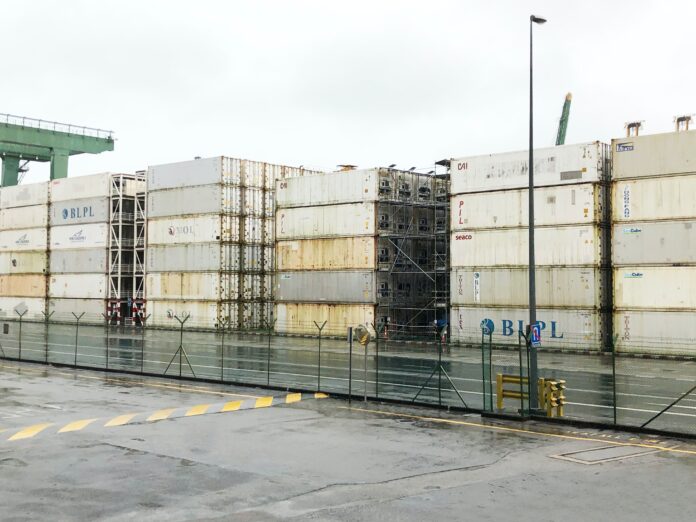
-
The Department of Agriculture’s proposal to import 400,000 metric tons of pork meat this year won’t kill the local industry but may present logistics challenges, warned Cold Chain Association of the Philippines (CCAP) president Anthony Dizon
-
There may not be enough electronic customs seals for all pork meat shipments, a requirement under the Bureau of Customs’ Electronic Tracking of Containerized Cargo System, if shipments simultaneously arrive in big volumes
-
Outbound port congestion may occur with more reefer import containers coming into the Philippines than those that need to be exported later. CCAP estimates about 20,000 reefer containers are required to import 400,000 mt of meat but the Philippines cannot export that same number of containers later due to lack of perishables volume
-
Availability of National Meat Inspection Service inspectors to evaluate and approve unloading and release of reefer containers may also pose a challenge
-
CCAP pushing for a “calibrated response” to fixing meat shortage
-
Pork supply in Luzon may take two years to normalize as no Asian Swine Fever vaccine is available yet, said Dizon
The Department of Agriculture’s (DA) proposal to import 400,000 metric tons (mt) of pork meat this year to augment the supply shortage “is per se normal,” but may present logistics challenges, according to Cold Chain Association of the Philippines (CCAP) president Anthony Dizon.
“The claim is now that if we are allowed to import 400,000 metric tons of pork, it will kill the local pork industry. This is not necessarily correct,” Dizon said during a recent webinar hosted by the Supply Chain Management Association of the Philippines.
DA earlier said it expects an almost 400,000 mt deficit in pork supply this year and proposes to address the shortage by raising the minimum access volume for pork imports to the same amount.
Dizon cited data from the Philippine Statistics Authority showing that in the past two years, local production under normal conditions was more than 300,000 mt annually. The supply of pork “has now been diminished” as the African Swine Fever (ASF) decimated production capability in Luzon, Dizon noted.
He noted that pork producers, citing the latest statistics, have claimed 70% of the production capability in Luzon has been affected by ASF.
The pork supply shortage is seen persisting for at least three more months because “none of the Department of Agriculture’s plans have been acted upon,” Dizon said, adding that the shortage in Luzon may take two years to normalize without an ASF vaccine in sight yet.
Logistics challenges
There are potential logistics problems if the 400,000 mt “materialize(s) over a short period of time,” so there has to be a “calibrated response” to the supply issue, Dizon pointed out.
One of the challenges will be the market’s absorptive capacity because supply exceeding the purchasing capacity of consumers will just lead to meat being stored. While this may be good for cold chain facility operators, it may not be so for consumers, Dizon noted.
Outbound port congestion may also occur with more reefer import containers coming into the Philippines than those that need to be exported later. CCAP estimates about 20,000 reefer containers are required to import 400,000 mt of meat but the Philippines cannot export that same number of containers later due to lack of perishables volume, leading to potential congestion at depots.
In addition, if meat imports simultaneously arrive in big volumes there may not be enough electronic customs seals (ECS) for all shipments, a requirement under the Bureau of Customs’ Electronic Tracking of Containerized Cargo System.
Under BOC rules, an ECS is required when reefer containers are transferred to cold storage facilities in order to allow the customs bureau to track, monitor, and audit the location and condition of cargoes in transit.
The availability of National Meat Inspection Service inspectors who will evaluate and approve the unloading and release of reefer containers may also pose a challenge.
Dizon noted there should be a “calibrated recovery strategy in areas that are presently ASF-free,” specifically in the Visayas and Mindanao.
Moreover, Dizon said “we need to divorce our mindsets from the ‘warm meat’ myth.” He said DA, as part of remedial measures, prefers the shipment of live pigs from Visayas and Mindanao to Luzon because consumers prefer fresh meat over frozen. DA has previously facilitated the shipments of live pigs from farms in Mindanao to Metro Manila.
Dizon pointed out, however, that “warm meat is not immune from bacterial contamination.”
He said agribusiness methodologies also need to improve and technology and biosecurity measures embraced.
“We need to aggressively pursue our agribusiness development plans to achieve food security and food sufficiency,” Dizon said, adding that while there are already plans there is also the need to fast-track implementation and execution. – Roumina Pablo





Thank you for using our photo!
Thanks as well.
Comments are closed.